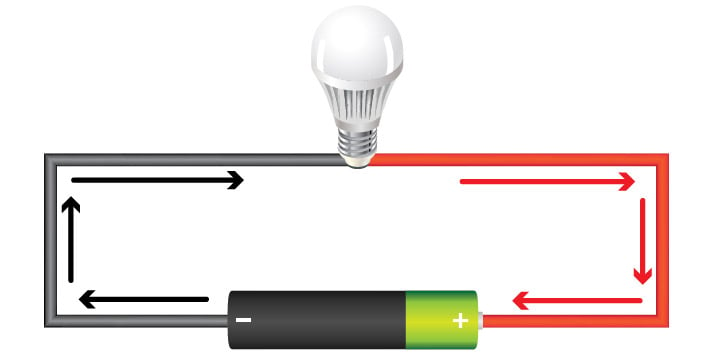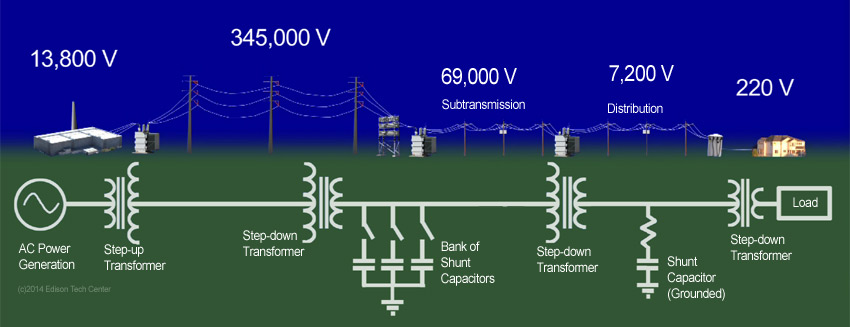Range of Voltages in an Electricity Supply System
In this case the output voltage is 5 volts. Voltage fluctuations on the public low voltage power system are required to be within accepted tolerances specified in the standards.

Distribution Voltage Level An Overview Sciencedirect Topics
Power house generates a voltage of about 1200 volts.

. Line-to-Line Voltage 120 208 120 240 230 400 240 415 277 480 347 600 Line -toline voltages are typically 1732 times the phase neutral voltages. Human does not touch these live wire at normal hand. The white paper compares NEC to ANSI Standards.
The low-power device cannot however run at full speed at the lower voltage. Domestic household or home appliances power supply single- phase or two-phase 230 Volts 440 Volts and 110 Volts. The voltage level is between 70 Volts to 600 Volts called low voltage.
It is a self-financing non-profit system which can survive financially in a falling market. Which Power in voltages in DC is not. Most distribution voltages are between 4 and 35 kV.
Voltage levels in installations will generally be within the utilisation range of 253V to 205V and may go above or below these limits for short periods. Range A Service Voltage Electric supply systems shall be so designed and operated that most service voltages will be within the limits specified for Range A. This shows that the 18LFXX20 devices can operate with a supply from 20 to 55 V and the 18FXX20 from 42 to 55 V.
131 shows that its maximum clock frequency at minimum supply voltage is 4 MHz. Explain the reasons for the use of a range of voltages in an electricity supply system. Systems above 1 kV to 35 kV AC.
In general the acceptable region of. Low Voltage LV. Generally electric supply is provided to those heavy load consumer commercial power supply for inductries where the demands is 11 kV from the lines which caries 11kV in three phase three wire overhead system and they make a separate sub station to control and utilize the heavy power in industries and factories.
The data Ref. There is an openness on prices costs and development plans. This is feed into transformers that step up the voltage to about 50000 volts for cross country transmission.
This may not be an exact answer to the question. So we generate power then step up the voltage for long range transmission and bring it. Output from electricity The 19th of April 2019.
Figure 4 - Phasor diagram of supply voltage The complex power drawn by the fluctuating load and the voltage phasors can be described by equations 1 and 2 respectively. Systems above 35 kV to 230 kV AC. Systems 100 V to 1000 V Supply voltage range 10 at the supply terminals Supply terminal to final equipment maximum 4 voltage drop AC and DC traction systems Bracketed are non preferred and should not be used if possible.
240 volts is achieved when combining two sources of 120 volts of different phases A and B phases. When A phase voltage peaks at 170 volts B phase is at -170 volts. In this article unless otherwise specified voltages are given as line-to-line voltages.
High HV Extra- High EHV Ultra-High Voltages UHV - 115000 to 1100000 VAC Medium Voltage MV - 2400 to 69000 VAC Low Voltage LV - 240 to 600 VAC Generac issued a white paper titled Medium Voltage On-Site Generation Overview. It sites the following NEC voltage standards. Under the wet condition human get a dangerous shock which leads to coma-stage or death.
However you do not want very high voltages in your house because they become dangerous. B phase current flows in the opposite direction as A phase. The occurrence of service voltages outside of these limits should be infrequent Range A Utilization Voltage.
Systems above 245 kV AC. Primary Distribution Voltage Levels The four major voltage classes are 5 15 25 and 35 kV. In electrical generating power stations electrical power is generated at medium voltage level that ranges from 11 kV to 25 kV.
Not quite sure of the numbers here but you can check on line for more accurate figures. The voltages supported by a UPS power supply in the US ranges from 50Hz 60Hg or 400Hg frequency conversions. This follows normal industry practice but it is sometimes a source of confusion.
The Danish direct electricity supply system is a minor part of the whole electricity supply system. 6 rows Voltage Level Voltage Range Type of System Power System Section. From this point to the user end voltage level varies in different levels.
This generated power is sent to the generating step up transformer to make the voltage level higher. At the heart of it. In a symmetrical three -phase electrical system the phase to neutral voltages should be equal if the.
Although this range is quite large 230V rated equipment should be capable of coping with it. An input voltage is the voltage required to power the system. Output voltage is the receiver component that generates voltage.
Several reasons for different voltages. In the system an input voltage is a supply voltage. Higher voltages for transmission lines results in less loss and smaller size cables.
A voltage provided to the circuit is referred to as an input voltage. Residential electric ranges electric dryers and central air conditioners usually need 240 volts to operate.

Voltages In Power Transmission Lines Or Transmission Voltages Electrical4u

How Electric Operators Maintain Acceptable Voltage Enerdynamics


No comments for "Range of Voltages in an Electricity Supply System"
Post a Comment